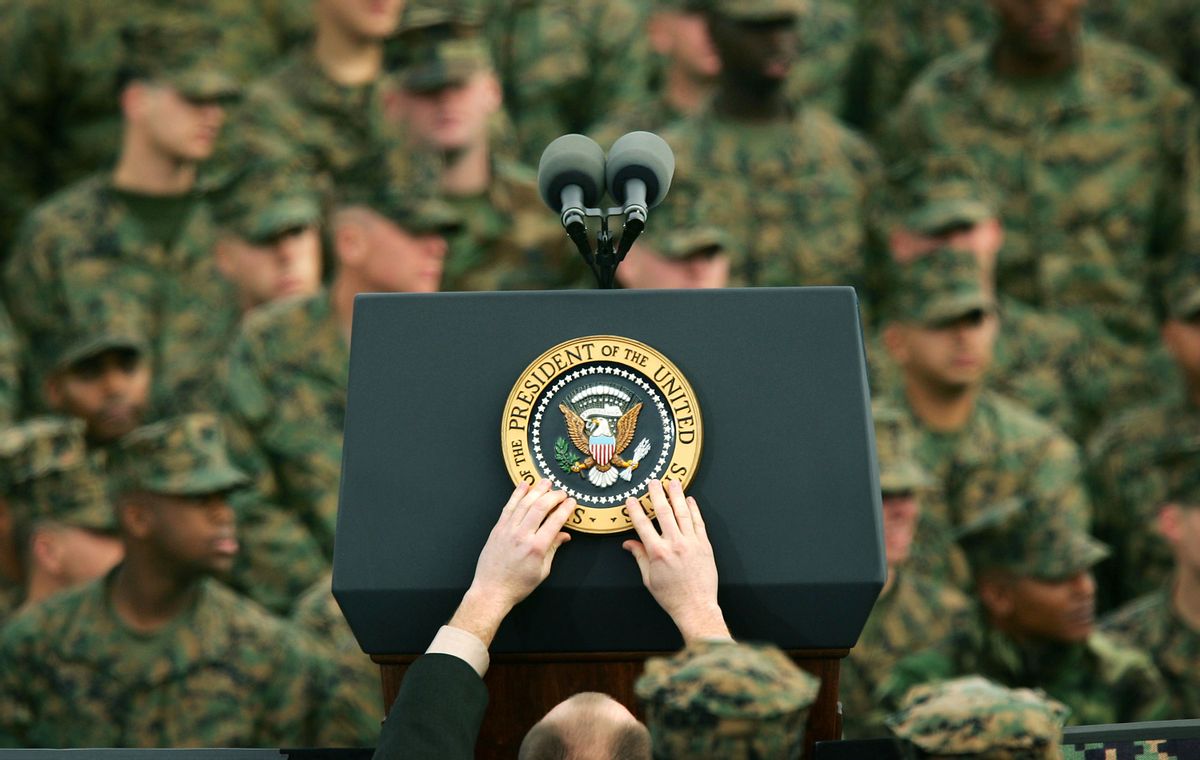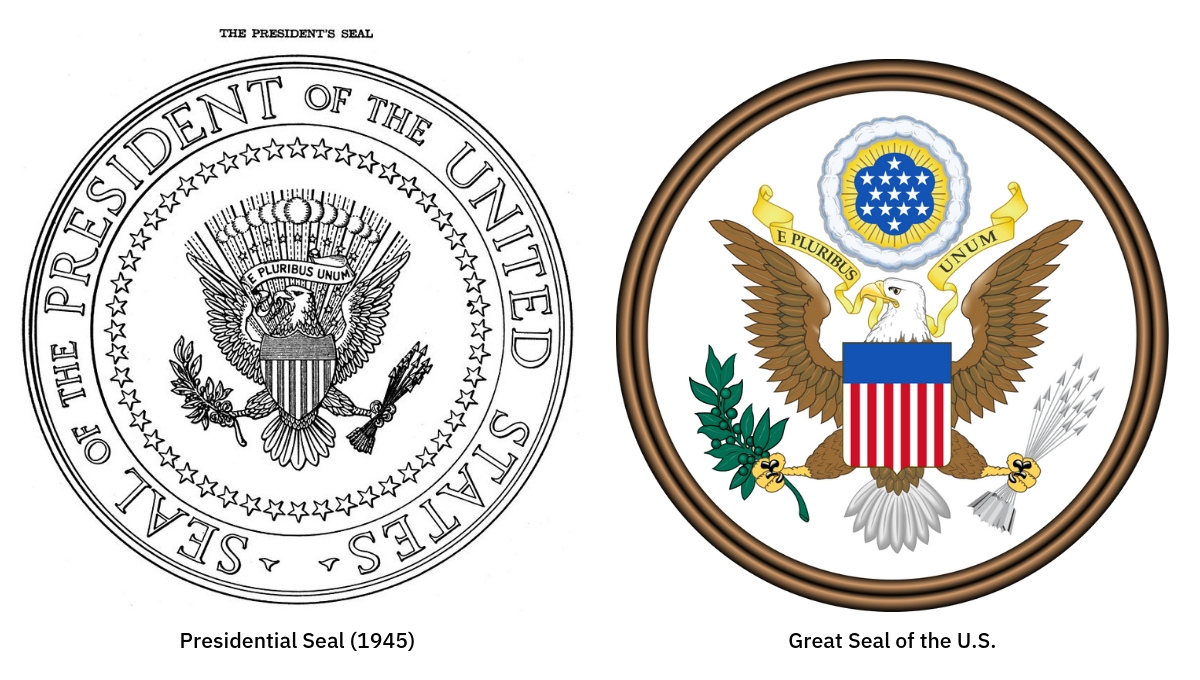One of the many bits of "secret" information that history buffs love to pass around is the rumor that the Seal of the President of the United States undergoes a surreptitious change in wartime, with the regular seal being swapped for slightly a different version in which the eagle's head is turned to face the talon clutching a group of arrows (rather than facing the talon holding an olive branch, the symbol of peace) as a subtle visual reminder that the nation is at war.
This rumor has been made familiar to modern audiences through its mention in the political television drama
Herney had always believed the most dominating aspect of the Oval Office was the colorful American eagle emblazoned on the room's oval carpet. The eagle's left talon clutched an olive branch and his right a bundle of arrows. Few outsiders knew that during times of peace, the eagle faced left — toward the olive branch. But in times of war, the eagle mysteriously faced right — toward the arrows. The mechanism behind this little parlor trick was the source of quiet speculation among White House staff because it was traditionally known only by the President and the head of housekeeping. The truth behind the enigmatic eagle, Herney had found to be disappointingly mundane. A storage room in the basement contained the second oval carpet, and housekeeping simply swapped the carpets in the dead of night.
Although the Seal of the President of the United States has undergone various changes over the years, its design is fixed by executive order and is not altered during wartime, as White House curator Bill Allman explained in response to a July 2004 query:
Q: I got into a debate with a friend after reading the book 'Deception Point' by Dan Brown. Is there any truth to the section about switching the carpet in the Oval Office when the country is at war or peace? Specifically, the American Eagle's talons facing left toward the olive branch in peace and right toward the arrows at times of war. I personally think it's fiction but my friend is insistent that it is a fact.
A: There is just one Seal of the President at any given time, and it does not change according to whether or not the United States is at war. However, the Seal has undergone modifications over the years. President Truman modified the Seal in 1945, and the changes included turning the eagle's head to face its right as opposed to its left.
A press release issued after the new design was approved said, "In the new Coat of Arms, Seal and Flag, the Eagle not only faces to its right — the direction of honor — but also toward the olive branches of peace which it holds in its right talon. Formerly the eagle faced toward the arrows in its left talon — arrows, symbolic of war."
Although the eagle featured in the Presidential Seal has faced its right ever since, there are items in the White House collection that were made before 1945 that display the eagle facing its left (such as state services, furnishings, architectural elements, etc.)
A video posted to the Obama White House YouTube Channel provides further evidence:
The last paragraph of the above-quoted response might provide a clue as to how this rumor began. The Great Seal of the United States includes a coat of arms featuring an eagle clutching thirteen arrows in one talon and an olive branch in the other, its head facing to the viewer's left, towards the talon with the olive branch. Presidential flags had historically featured a similar coat of arms, but in 1916 President Woodrow Wilson issued an executive order that changed the design slightly, such that the eagle's head was modified face to the viewer's right, towards the talon holding the arrows:
The coat of arms on the presidential flag changed again in 1945 when President Harry Truman issued Executive
As biographer David McCullough noted of Truman's motivation for making the change:
One morning, standing at his desk, [Truman] presented to the press a new presidential
flag ... "This new flag faces the eagle toward the staff," Truman explained, "which is looking to the front all the time when you are on the march, and also has him looking at the olive branch for peace, instead of the arrows forwar ..." Both the flag and presidential seal had been redesigned for the first time since the Wilson years, and Truman meant the shift in the eagle's gaze to be seen as symbolic of a nation both on the march and dedicated to peace.
Possibly, in retrospect, some people recalled that the eagle on the presidential flag or seal had changed around the time of World
The notion of a presidential seal that featured as its centerpiece an eagle whose gaze changed direction based upon the state of belligerency in the world was the subject of a wry comment made by British Prime Minister Winston Churchill as he was visiting with President Truman in 1946:
Pointing to the President's seal on the wall of the [train] car, Truman explained that he had had the eagle's head turned to face the olive branch. Churchill said he thought the eagle's head should be on a swivel.



